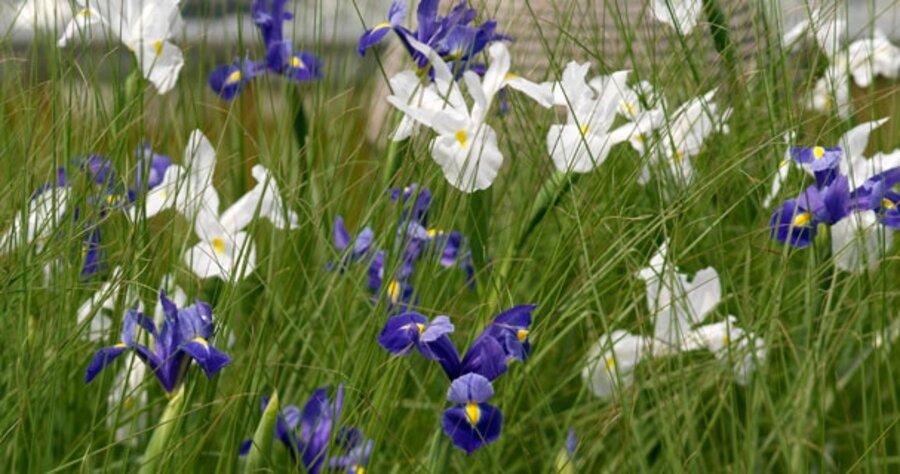Dutch iris - charming additions to the bulb garden
Loading...
My favorite plants tend to be a bit different. I want something that not everyone is growing. But I don't have much patience with picky plants. So I search for ones that are a bit out of the ordinary, but not difficult (few insect or disease problems, for instance).
Now that it's October, I'm thinking about spring-flowering bulbs. My husband admires tulips and I like daffodils, so those get planted every year along with lots of crocus, because I enjoy anything that gives me hope that winter may eventually make way for spring and warmer weather.
But I always add something beyond the usual. One of the easiest -- and, I think, prettiest -- is Dutch iris. I can't imagine why it isn't grown much more widely than it is. The flowers are so delicate looking, which appeals to me.
And that charm is echoed by the thin grasslike foliage, which contributes to the plants' elegant appearance.
I'll never forget my surprise the first year I planted Dutch iris in the fall and the leaves came up right away. I had no idea that was going to happen.
But in a climate without too much snow, it has several advantages: something green in the garden all winter, for instance, and it lets you know where bulbs have already been planted, if you tend -- like me -- to get your bulbs in the ground over a period of weeks and don't always remember exactly where you've already planted.
Flowers come in the usual iris shades: bluish, purple, lavender, yellow, white, and combinations of those colors. Dark purple can be stunning when planted with yellow varieties. (I like Purple Sensation with Yellow Beauty.)
The flowers tend to last about 10 days to two weeks in mid to late spring, depending on how warm temperatures are at bloom time. (If it's cool, they'll last longer.) They make wonderful cut flowers.
According to Cameron at Defining Your Home Garden, Dutch iris are also rabbit- and deer-resistant. I've read that rodents -- read squirrels -- won't dig up the bulbs, which is another plus.
The only disadvantage I know of with Dutch iris is that they aren't hardy enough for Zone 4 or colder. And I've been told that the foliage may appear in spring, not fall, in Zone 5.
Plant the bulbs in fall about 6 inches deep and 4 inches apart in full sun or light shade. As with all bulbs, Dutch iris prefer decent drainage. They do like some moisture in spring, though -- provided in most areas by the usual spring rains, but give them a weekly watering if rainfall doesn't arrive on schedule.
Not long after planting, that pretty foliage will appear. It's a reminder that come spring, you're in for a treat.





